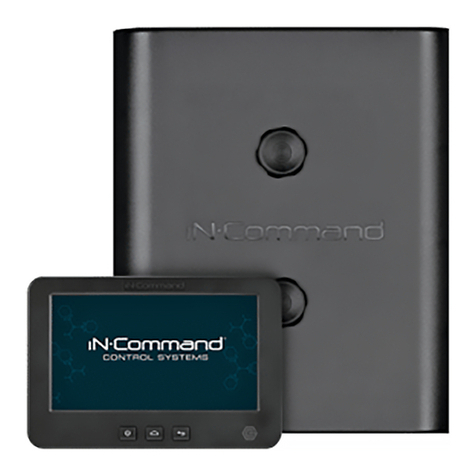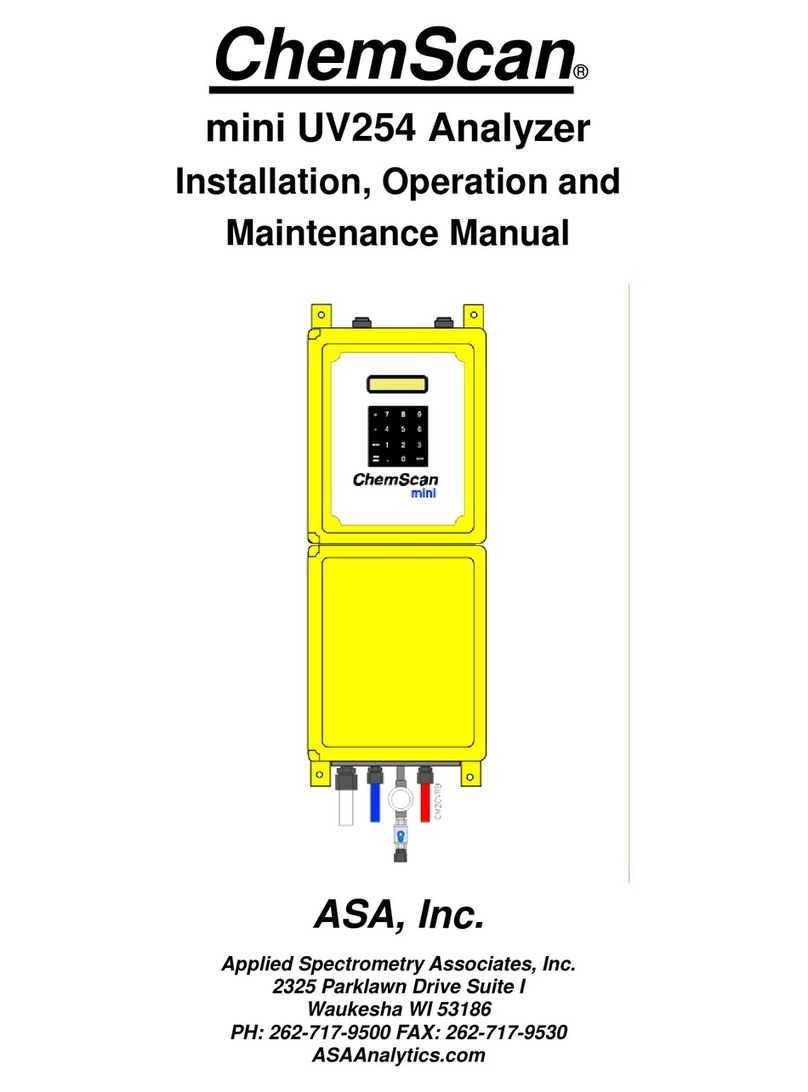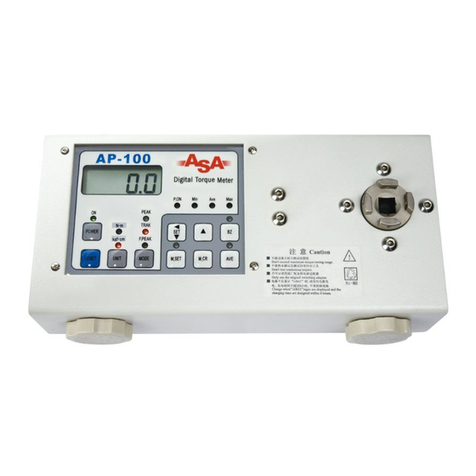
6
Installation
IMPORTANT: Never mount the equipment in such a way that it is difficult to locate or operate the
disconnecting device.
WARNING: If this equipment is installed or used in a manner not specified in these instructions,
proper operation cannot be assured, and the safety and protection provided by the equipment may be
impaired.
WARNING: UV Radiation inside.
CAUTION: Always wear suitable eye protection.
IMPORTANT: Ne jamais installer l’équipement de façon à render difficile l’accès à l’emplacent ou
l’opération du mécanisme de débranchement.
AVERTISSEMENT: Si cet équipement est installé ou utillisé d’une façon différente ou non spécifiée
dans nos instructions, nous ne pouvons assurer sa bonne opération, et la sécurité et la protection
fournies par l’équipement pourrait être diminuées.
AVERTISSEMENT: Rayonnement ultraviolet à l’intérieur
ATTENTION: Toujours utiliser une protection appropriée pour les yeux.
Mounting
The analyzer should be mounted securely to an indoor wall using appropriate fasteners. Refer to
Figure 1 for detailed information. Indoor installation is recommended to provide more moderate
ambient temperature cycles. Extreme temperatures can cause optical instability and freeze the reagent
and cleaning solutions.
Mount the wire bottle racksprovided to a vertical surface adjacent to the analyzer as shown in Figure
3. Place the reagent bottlesin the rack and connect the bottle capsto the reagent bottles.
Electrical and Output Connections
Power Requirements: 100 to 240 V 50/60 Hz, 70 VA Maximum
The system may be plugged into any appropriate 120 VAC outlet. Outlet location should be adjacent
to the analyzer so that an extension cord is not needed and the system may be readily unplugged. The
plug serves as the primary disconnect.
If a more permanent installation is required by design or local code, the water-tight cord-set may be
replaced by approved watertight conduit, installed by a qualified person according to local and
national codes. In this case, the PRIMARY DISCONNECT IS PROVIDED BY OTHERS. A switch
or circuit breaker, clearly marked for this purpose, should be located adjacent to the analyzer.
WARNING: Conduit connected to the fiberglass enclosure will not serve as a grounding means.
Bonding must be provided between the labeled ground terminal and electrical ground.
AVERTISSMENT: Le conducteur branché au boîtier en fibre de verre ne sert pas de mise à la terre-
mise de masse. Il faut connecter un fil entre la borne de mise à la terre et la borne électrique.
Analog output wires are connected as shown on the analyzer’s internal label. (See menu to select
analog output range.) Analog output is 4-20 mA. The analyzer sources current into the analog loop.
The loop is fully isolated. The 4-20 mA connection is on terminals 8 & 9 (shield conductor on
terminal #7) as shown on the detail view in Figure 1.






























